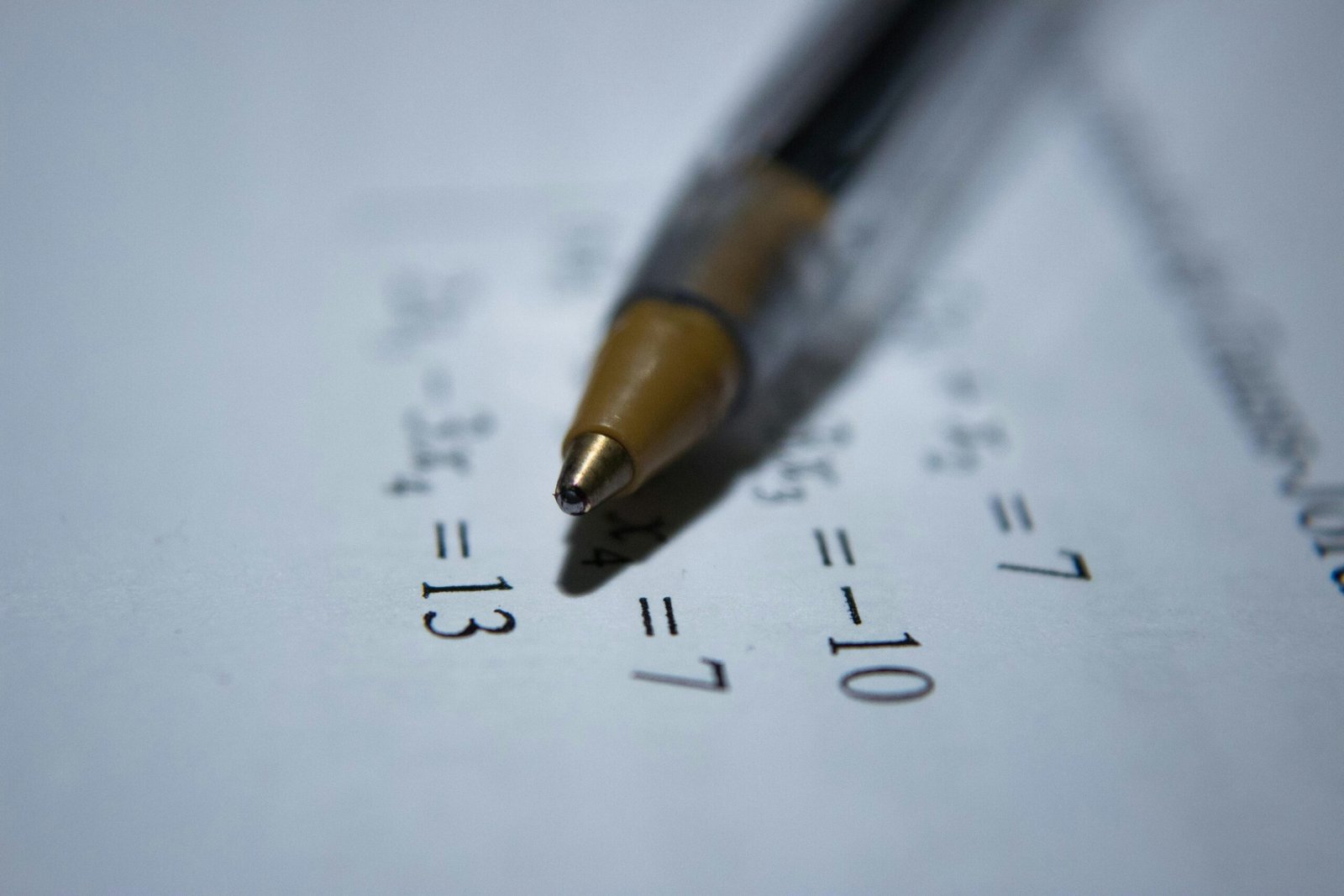Preparing for the SAT Math section can be daunting for many students, but fear not – SAT tips are here to help you. While this section might be challenging, with the right strategies, you can conquer it. Understanding what the SAT Math section covers, as well as the format and types of questions you will face, is crucial if you aim to score well. Ready to ace it? Let’s dive in!
SAT Math Format

The new digital SAT has a significantly shorter duration compared to the previous paper-based version. The test is now 2 hours and 14 minutes long, down from the previous 3 hours. This reduction in testing time aims to provide a more efficient and less stressful experience for students. The test is divided into two main sections – Reading and Writing, and Math. Each section is further split into two modules of equal length, with a 10-minute break in between. This break allows students to rest and recharge before tackling the second module of each section.
Adaptive Format Implementation
One of the most notable changes in the digital SAT is the implementation of an adaptive format. This means that the difficulty of questions in the second module of each section is determined by the student’s performance on the first module. If a student performs well on the first module, the second module will present more challenging questions, and vice versa. This adaptive approach allows the test to be tailored to each student’s skill level, providing a more accurate assessment of their abilities.
By adjusting the difficulty based on individual performance, the digital SAT ensures that students are challenged appropriately and that their scores reflect their true potential. This adaptive format also helps to reduce test-taking anxiety, as students are less likely to encounter questions that are significantly beyond their current level of understanding.
Math Section Overview
Over the course of the Math section, you’ll answer multiple-choice and student-produced response questions that measure your fluency with, understanding of, and ability to apply the math concepts, skills, and practices that are most essential.
Approximately 30% of Math questions are set in context. These in-context (“word”) questions require you to consider a science, social studies, or real-world scenario and apply your math skills and knowledge, along with an understanding of the context, to determine the answer to each.
Related Reading
What Changed In The Digital SAT?

1. Calculator Use
Calculators are now allowed throughout the entire Math section, unlike the paper SAT, which had a no-calculator portion.
2. Integration of Graphing Calculator
A graphing calculator is integrated into the digital test experience so all students have access.
3. Question Length
The average length of Math word problems has been reduced. These questions still assess applying math skills to real-world situations, but the shorter contexts aim to be less of a barrier for some students.
4. Updated Test Structure
The Math section is now divided into two 35-minute modules, with the first module containing a mix of easy, medium, and hard questions arranged from easiest to hardest. Performance on Module 1 determines if a student gets an easier or harder Module 2.
5. Variety in Question Types
The majority of questions (around 75%) are still multiple-choice with four answer options. The remaining 25% are student-produced response questions where students enter their answer.
Write, Study, And Research 10x Faster For Free With Conch AI
Studying new material isn’t easy but tedious, time-consuming, and repetitive. Conch steps in so you can focus on learning. With Conch, you can upload your course material (Upload class notes, documents, lectures, videos, and more) and generate studysets live (Record your lectures, meetings, presentations, or interviews to watch notes and flashcards generate live).
Ensuring Academic Integrity with ConchAI
At Conch, we guarantee that there’s a 99.99% that you won’t get caught after using our tool. If you use ConchAI to write your essays you will be undetected by algorithms like GPTZero and TurnItIn. With Conch, you can write your essays 10x faster, AI detection-free. Our tool helps you add citations, it helps you rewrite content so that it’s undetectable by AI, and so much more, all to protect students’ time and let them focus on actually learning the content!
Simplifying Student Life with ConchAI
So Chegg users, High School and college students, and anyone writing papers, use Conch to make your student life easier and bypass AI detection tools with ease. Conch has over +1 million users to date and growing.
Sign up and use Conch’s AI Essay writer and Study for free for free today.
The 4 Types Of Topics Tested On The SAT Math Section

1. Algebra
In this part of the SAT math section, you will encounter questions focusing on linear equations in one variable, linear equations in two variables, linear functions, and systems of two linear equations in two variables. You can expect 13 to 15 questions from this topic. Make sure to review how to solve these types of equations and functions before taking the test.
2. Advanced Maths
If you see the label “Advanced Maths” on a question, it means you’ll be dealing with equivalent expressions, nonlinear equations in one variable, system of equations in two variables, and nonlinear functions. Like the algebra section, this category also has around 13 to 15 questions. Before test day, take time to understand how to approach and solve these more complex math problems.
3. Problem-solving and Data Analysis
In this section, you’ll be asked to apply quantitative reasoning to solve ratios, rates, proportional relationships, percentages, and probability. You’ll also need to evaluate sample statistics. Expect around 5 to 7 questions related to this category. Brush up on these topics to ensure you can tackle these types of problems during the test.
4. Geometry and Trigonometry
Here, you’ll face questions related to the area and volume parameters of lines, angles, circles, right triangles, and right triangle trigonometry. Plan for around 5 to 7 questions delving into these geometric principles and equations. Practice solving these types of problems beforehand to increase your confidence when encountering them on the SAT math section.
What Is The Hardest Part Of SAT Math?

For many students, the most difficult part of the SAT Math section is the advanced algebra, geometry, and data analysis questions. These categories of questions often require a deep understanding of mathematical concepts and the ability to apply them in complex problem-solving scenarios.
Time Constraints in the SAT Math Section
A crucial factor that intensifies the difficulty of the SAT Math section is the time constraints of the test. This aspect demands not only proficiency in mathematical concepts but also speed in solving problems accurately. Learning how to manage test anxiety as part of your overall test prep strategy is essential. Proper preparation and practice are vital, as they help you manage your time effectively during the test.
Getting Help for the SAT Math Section
If you are struggling with certain math concepts that appear on the test, tutoring services can be beneficial. By pinpointing where you struggle the most during test prep, you can identify areas where a tutor can work with you on specific issues.
How To Improve Your SAT Math Score

Before diving into preparing for the SAT Math section, it’s crucial to set a goal score by understanding what is considered a good SAT math score at the colleges of your choice. This provides a clear target and motivates you to work towards achieving that score. Once you have a target score in mind, you can start planning your test prep strategy for the SAT Math section.
Familiarizing with Test Format and Content Areas
Start by getting acquainted with the SAT Math test format and the content areas it covers. Take practice tests to understand the kinds of questions you’ll encounter and evaluate your performance. This step helps in identifying your strengths and weaknesses in math, guiding you to focus on improving areas where you might struggle.
Strengthening Weak Areas and Utilizing Resources
For areas where you need improvement, a targeted study approach is essential. Use SAT prep books, online courses, or tutoring to strengthen your math skills. These resources offer valuable insights and strategies to enhance your math problem-solving abilities, preparing you for success in the SAT Math section.
Developing Effective Test-Taking Strategies
Effective test-taking strategies play a significant role in boosting your SAT Math score. Learn how to manage your time wisely during the test, giving ample time to each question without rushing. Use the process of elimination to rule out incorrect answer choices, increasing your chances of selecting the correct answer. These strategies can help you navigate the SAT Math section with confidence.
Practicing under Timed Conditions and Reviewing Mistakes
Regular practice under timed conditions is crucial for building speed and accuracy in solving math problems. Practice tests offer an opportunity to hone your problem-solving skills, making you more comfortable with the SAT Math section. Reviewing mistakes after each practice test enables you to learn from errors, preventing similar mistakes in the future.
Guessing and the Process of Elimination
When faced with challenging questions on the SAT Math section, remember that you are not penalized for incorrect answers. If unsure about an answer, make an educated guess rather than leaving the question blank. Utilize the process of elimination to eliminate unlikely answer choices, increasing your chances of selecting the correct option. Guessing strategically can improve your score, making each question an opportunity to earn points.
By following these tips and strategies, you can enhance your performance on the SAT Math section and work towards achieving your goal score. Consistent practice, targeted study, and effective test-taking strategies are key to success on the SAT Math section.
Related Reading
- How To Study For The Sat
- Sat Reading Tips
- Sat Essay Prompts
- Sat English Tips
- How To Ace The Sat
- Digital Sat Tips
- Sat Math Topics
- Good Sat Score Range
- Sat Math Tips
- Sat Math Formulas
- Sat Writing Tips
- Sat Vocabulary Flashcard
- Sat Reading And Writing
- Sat Grammar Tips
- Ai Sat Prep
- Tips for SAT
- SAT Tips and Tricks
- Last Minute SAT Tips
- Sat Essay Tips
- SAT Study Tips
Complete Step-by-Step Guide on How To Use Conch AI To Ace Your Classes (Efficient Writing, Studying, Note Taking, and More!)
Do You Have Any Questions?
Discovered a major bug or experiencing an issue, or need help using a certain feature, shoot as an email.
Write, Study, And Research 10x Faster For Free With Conch AI
Studying new material isn’t easy but tedious, time-consuming, and repetitive. Conch steps in so you can focus on learning. With Conch, you can upload your course material (Upload class notes, documents, lectures, videos, and more) and generate studysets live (Record your lectures, meetings, presentations, or interviews to watch notes and flashcards generate live).
Your Secret Weapon Against AI Detection
At Conch, we guarantee that there’s a 99.99% that you won’t get caught after using our tool. If you use ConchAI to write your essays you will be undetected by algorithms like GPTZero and TurnItIn. With Conch, you can write your essays 10x faster, AI detection-free. Our tool helps you add citations, it helps you rewrite content so that it’s undetectable by AI, and so much more, all to protect students’ time and let them focus on actually learning the content!
Revolutionizing Student Writing and Academic Integrity
So Chegg users, High School and college students, and anyone writing papers, use Conch to make your student life easier and bypass AI detection tools with ease. Conch has over +1 million users to date and growing.
Sign up and use Conch’s AI Essay writer and Study for free for free today.

Leave a Reply